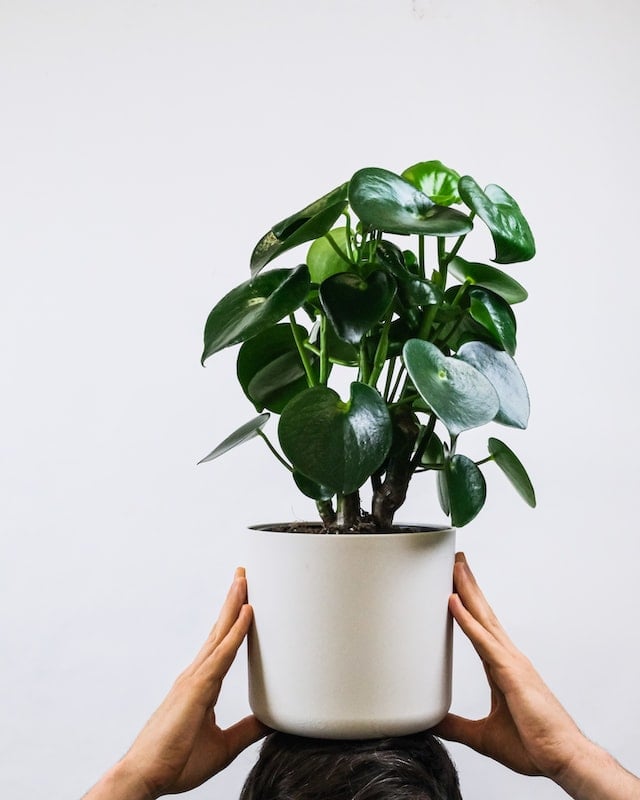If you’re looking for a hardy houseplant you don’t have to worry about, Peperomia polybotrya is built for low maintenance yet lush foliage.
Caring for a Peperomia polybotrya doesn’t take a lot of technique and the results can be rewarding. Plus, it’s also a great addition to your home, patio, or garden in its simple beauty.
What is a Peperomia Polybotrya
Peperomia polybotrya is a small, compact plant typically native to South America. Tropical climates such as Columbia and Peru are the perfect home for this plant, which doesn’t grow much taller than a foot. It’s the perfect houseplant for small spaces and busy schedules.
Most people know the Peperomia Polybotrya for its shiny, fleshy, and lush leaves. They have tear- or heart-shaped leaves as well as green-tipped flowers that resemble tails. These flowers grow in clusters and smell sweet, but don’t typically last long.
The Peperomia polybotrya is part of the Piperaceae family, also known as the pepper family. The name Peperomia polybotrya is Greek for “pepper-shaped” and “many,” likely describing the groups of flowers that resemble tails or small peppers.
Chinese Money Plant vs. the Peperomia Polybotrya
There are many common names for the Peperomia polybotrya, such as the coin-leaf peperomia, peperomia raindrop, raindrop peperomia, coin plant, and Chinese Money Plant.
However, the Chinese Money Plant is actually a misnomer. It is officially known as the Pilea peperomioides. Leaves on both plants are similarly shaped, but they are separate entities.
How to Care For Your Peperomia Polybotrya
Care for your Peperomia polybotrya is relatively minor, but you will need to ensure you pay attention to a few key factors.
Light
Peperomia polybotrya plants prefer bright but indirect sunlight. If they experience low light, they may become leggy, but too much light will burn the leaves.
Climate
As you might imagine, coming from South American tropical countries, the Peperomia polybotrya enjoys cool and humid conditions, ranging in temperature from 60-80 degrees Fahrenheit. A humidity of 40% or less is best.
The Peperomia polybotrya is rated to grow in USDA hardiness zones 10-12 but prefers Zone 10 if grown outdoors.
Watering
Peperomia polybotrya plants are very easy to over-water, so it’s best to keep an eye on their soil and only water them every 7-10 days during the summer. Reduce your watering schedule during the winter. The leaves and stems will store water during the dry season.
Adding a balanced liquid fertilizer once a month can help in the summer months as well, but it should not be used during the winter time. You can also mist the leaves to replicate the humidity of its native climate, as well as keep dust and mites off.
Related Article: Best Time To Mist Plants
Underwatering your Peperomia polybotrya can cause wilting and crisp leaves. If you can’t put your finger into the soil very far, it’s likely your Peperomia polybotrya needs more water.
However, you should be careful of over-watering, as the excess water can kill the roots. If you notice yellow leaves, waterlogged soil, rotting stalks, or an overly-heavy pot, it’s likely the plant has been overwatered.
Pruning
Though they don’t need much grooming, Peperomia polybotrya plants should be frequently inspected for dead leaves, flowers, and pests. Look at both sides of the leaves and clean them regularly. You can also spray the leaves with Neem oil to prevent infestations.
Propagating
You can use the leaf, tip, or stem cuttings of the Peperomia polybotrya to propagate. Place the cuttings in moist soil, such as a houseplant mix or a half-and-half mix of peat moss and perlite. Place them in moderate sunlight and keep the soil moist for 1-2 weeks. Small leaflets will begin to grow and should be repotted as they begin to crowd one another.
Related Article: Tips on Propagating Monstera Aerial Roots
If your Peperomia polybotrya has unique-colored leaves and you want to grow plants with similar leaves, simply use cuttings from these leaves for propagation. As the new plants grow, they should resemble the pattern on the original leaf.
Most Peperomia polybotrya plants won’t need repotting. The weak roots do not transplant well and can become damaged in the process, threatening the life of the plant. Generally speaking, Peperomia polybotrya plants grow slowly, so a damaged root system could cause irreparable harm to the plant itself.
Pest and Disease Concerns
The great thing about the Peperomia polybotrya plant is that they are susceptible to very few diseases. There are two main pests that can infest the Peperomia polybotrya: red spider mites and mealybugs. These bugs suck the sap from the leaves, which causes small yellow spots. These pests can be identified by their spider webs or cotton-like masses and should be removed immediately.

Our Final Thoughts on Caring for Your Peperomia Polybotrya
Taking care of your Peperomia polybotrya doesn’t take a whole lot of work, but it is a good idea to know how to help it thrive. When you see the beautiful, sweet flowers bloom, the hard work you’ve put in will all seem worth it.

